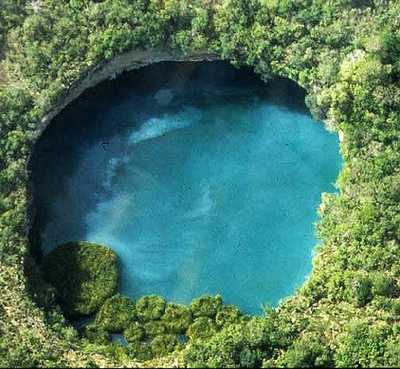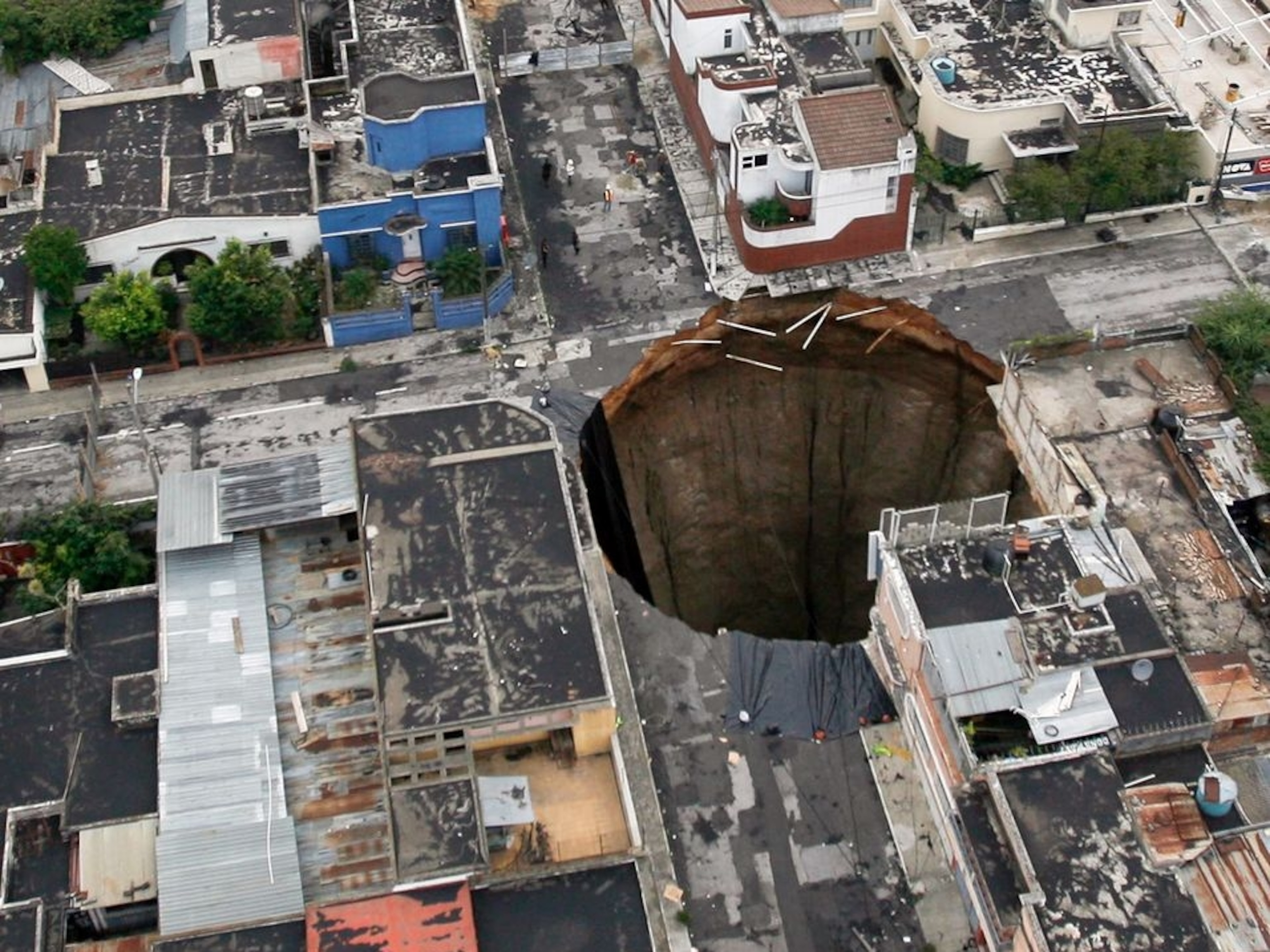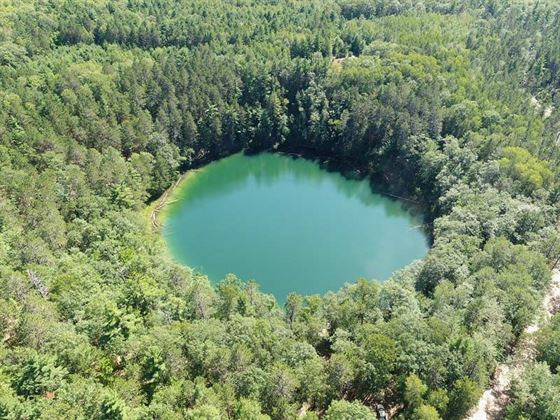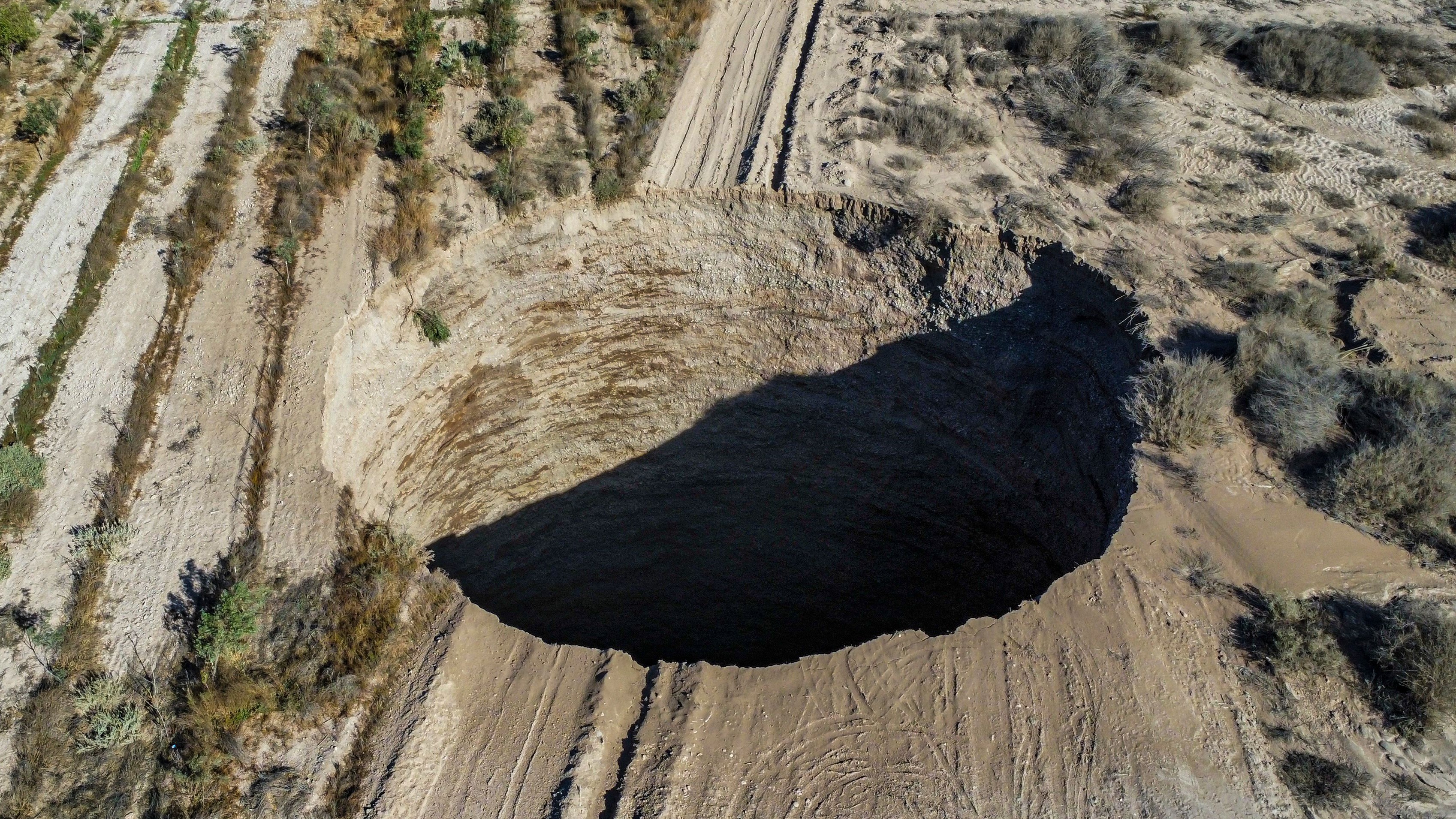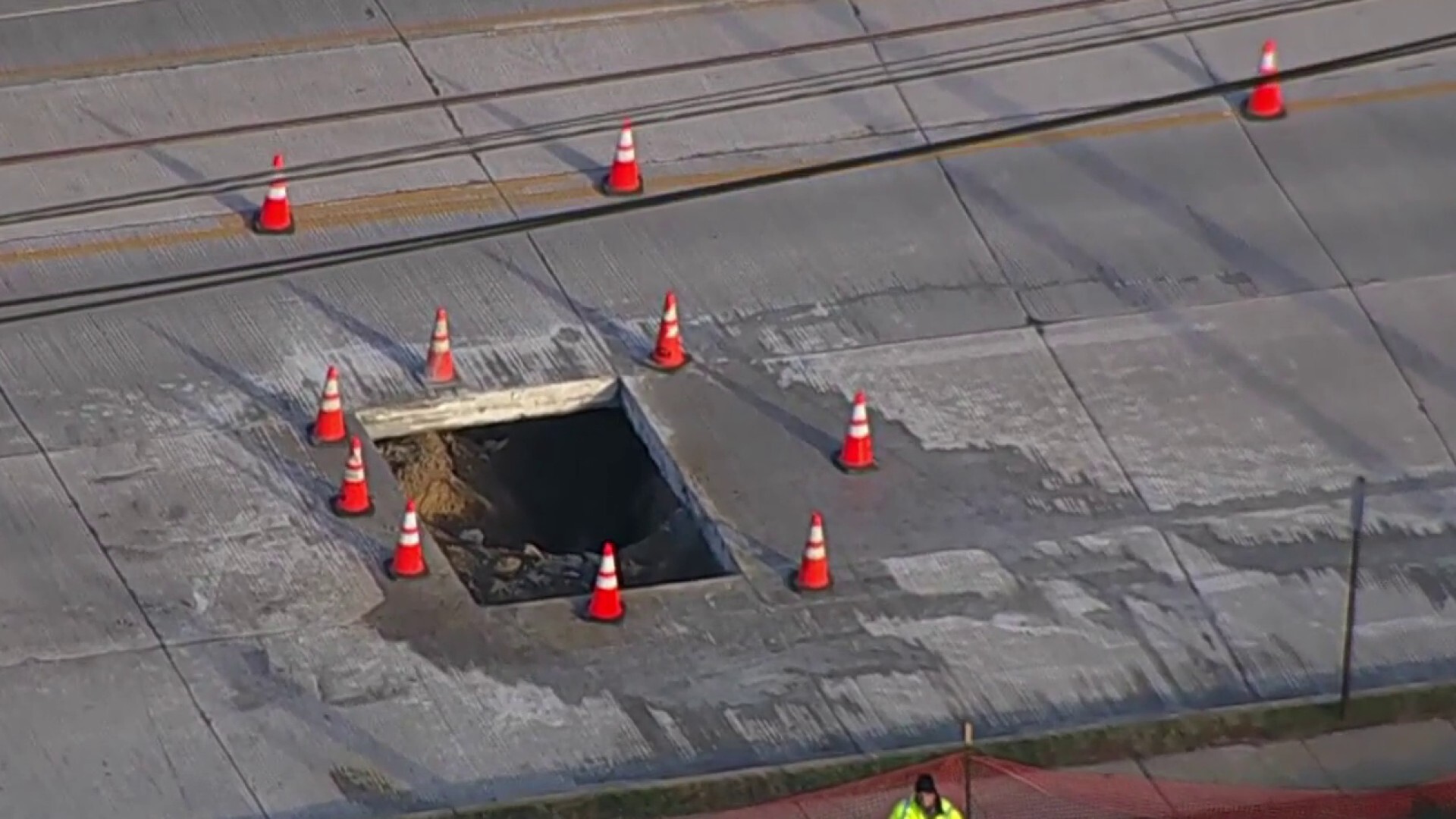Topic mexican sinkhole: Discover the mysterious beauty of Mexican sinkholes, nature"s underground cathedrals, where history and geology blend into breathtaking landscapes ready for exploration.
Table of Content
- What caused the sinkhole to open up in the central Mexican town of Santa María Zacatepec?
- Notable Sinkholes in Mexico
- Understanding Cenotes
- Conclusion
- Introduction to Mexican Sinkholes
- Types of Sinkholes in Mexico
- YOUTUBE: Huge sinkhole in Mexico threatens to swallow house
- Geological Formation of Sinkholes
- Famous Mexican Sinkholes and Their Locations
- Ecological Significance of Sinkholes
- Exploring Sinkholes: Tourism and Activities
- Conservation Efforts for Sinkhole Protection
- Impact of Climate Change on Sinkholes
- Local Legends and Cultural Importance
- Safety Measures for Sinkhole Exploration
What caused the sinkhole to open up in the central Mexican town of Santa María Zacatepec?
The sinkhole that opened up in the central Mexican town of Santa María Zacatepec was caused by a combination of natural and human factors:
- Geological Makeup: The region\'s geological makeup, which often includes limestone bedrock susceptible to erosion, played a significant role in the formation of the sinkhole.
- Underground Caverns: The presence of underground caverns and waterways beneath the surface can weaken the stability of the ground above, making it more prone to collapse.
- Heavy Rainfall: Periods of heavy rainfall can saturate the soil and put additional pressure on the underground structures, contributing to the collapse.
- Human Activity: Factors such as groundwater extraction, construction, or improper waste disposal can also contribute to the destabilization of the ground and increase the likelihood of sinkhole formation.
READ MORE:
Notable Sinkholes in Mexico
- Zacatón Sinkhole: Located in the state of Tamaulipas, Zacatón is one of the deepest water-filled sinkholes in the world, reaching depths of approximately 339 meters (1,112 ft). It is part of the Zacatón system, a group of unique karst features that attract scientists and explorers alike.
- Sinkhole in Puebla: A massive sinkhole that appeared in Santa Maria Zacatepec, Puebla, in 2021, quickly captured national attention. Measuring over 300 feet in diameter, this sinkhole has affected local communities, swallowing homes and agricultural land. Its expansion has been a cause for alarm and fascination.
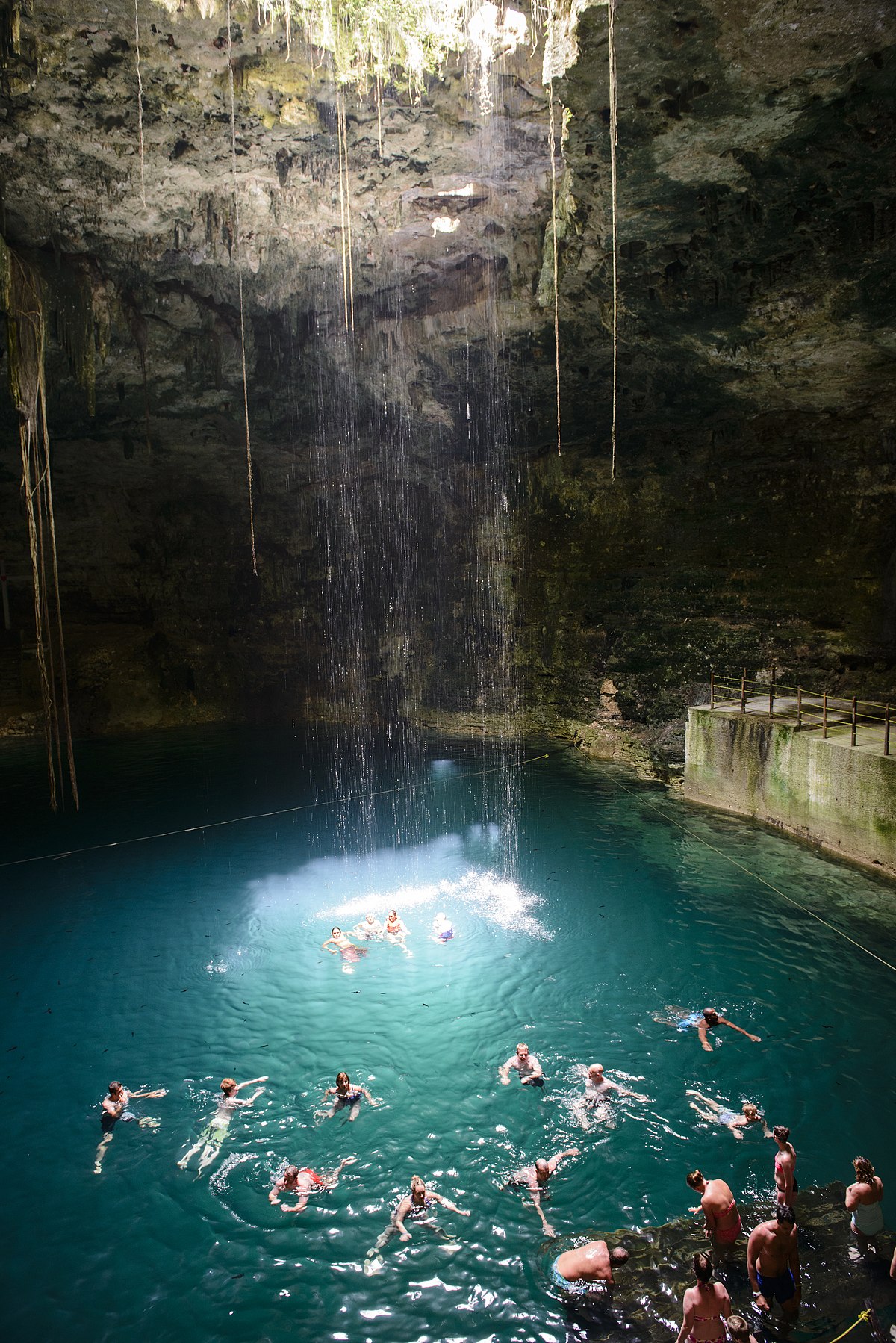
Understanding Cenotes
Cenotes are not only geological wonders but also hold cultural and historical significance. The ancient Maya civilization utilized cenotes as water sources and sacred sites for rituals, including offerings to the gods. Today, cenotes are popular tourist destinations, offering swimming, snorkeling, and diving experiences in crystal-clear waters surrounded by stunning natural beauty.
Environmental Significance and Challenges
While cenotes and sinkholes add to Mexico"s rich natural heritage, they also pose challenges. Their preservation is crucial for maintaining biodiversity, supporting local water supplies, and protecting historical artifacts. However, environmental threats such as pollution, over-tourism, and unsustainable development pose risks to these delicate ecosystems.
Conclusion
Mexico"s sinkholes and cenotes are windows into the earth"s geological history and the ancient Maya culture. Efforts to study, preserve, and sustainably manage these natural wonders are vital for future generations to enjoy and learn from Mexico"s unique geological features.
:max_bytes(150000):strip_icc()/Cenote-Tza-Ujun-Kat-Merida-Mexico-1-003d26c74c514edeb9b05529c6556387.jpg)
Introduction to Mexican Sinkholes
Mexican sinkholes, or cenotes, are natural wonders found primarily in the Yucatan Peninsula. These openings in the ground reveal groundwater pools and have been formed over thousands of years due to the limestone bedrock collapsing. Cenotes play a vital role in the region"s ecosystem and serve as a water source for the local wildlife. They are also significant to the Mayan culture, considered sacred and used for various rituals. Today, cenotes attract tourists from around the world, offering unique experiences for swimming, snorkeling, and exploring ancient underwater worlds.
- Definition: Natural pits or sinkholes revealing groundwater.
- Formation: Result of limestone bedrock collapsing over millennia.
- Cultural Significance: Sacred to the Mayans, used for rituals.
- Ecosystem Role: Vital water sources for local wildlife.
- Tourism: Popular destinations for swimming, snorkeling, and exploration.
Each cenote is unique, ranging from open-air pools to intricate cave systems, showcasing the geological diversity and beauty of Mexico"s landscape. Their crystal-clear waters and the mystical atmosphere make them a must-visit for nature lovers and adventure seekers alike.
Types of Sinkholes in Mexico
In Mexico, sinkholes, known locally as cenotes, vary widely in type and formation. These natural wonders are categorized mainly based on their origins and structures, each offering unique landscapes and ecosystems.
- Solution Sinkholes: Formed by the dissolution of limestone by acidic water, these sinkholes are often found in the Yucatan Peninsula, where they are a significant water source.
- Collapsed Sinkholes: These occur when the roof of a cave collapses, creating a sinkhole on the surface. They are common in areas with extensive underground cave systems.
- Human-induced Sinkholes: Resulting from activities such as drilling, mining, construction, or excessive groundwater pumping, these sinkholes are a reminder of the impact of human activity on natural landscapes.
Each type of sinkhole contributes to Mexico"s diverse geological and cultural landscape, offering unique opportunities for exploration, study, and appreciation of natural beauty.

Huge sinkhole in Mexico threatens to swallow house
Sinkhole: Witness the incredible power of nature as you watch mesmerizing footage of a sinkhole forming and expanding. This captivating video is a reminder of the Earth\'s constant transformation and beauty.
Gigantic sinkhole appears in central Mexico
A sinkhole that has been growing dozens of metres daily since last weekend is worrying the residents of a rural area of the central ...
Geological Formation of Sinkholes
The formation of sinkholes in Mexico is a fascinating process that involves several natural factors working together over thousands of years. These geological formations are primarily found in regions with prevalent limestone, a soluble rock that plays a significant role in their creation.
- Dissolution: The initial stage involves rainwater absorbing carbon dioxide from the atmosphere and soil, forming a weak carbonic acid. This acidic water then dissolves the limestone as it percolates through the ground, creating underground cavities.
- Subsidence: Over time, as limestone dissolves, spaces and caverns develop underground. If these cavities grow large enough, the land surface can no longer support its weight, leading to subsidence and the formation of a sinkhole.
- Collapse: In some cases, the roof of an underground cavern collapses suddenly, forming a sinkhole. This can happen naturally or be triggered by human activities such as drilling or heavy construction.
This natural process results in the creation of cenotes and other types of sinkholes, contributing to the unique and diverse landscapes found across Mexico. These formations are not only of geological interest but also hold significant ecological and cultural value.
Famous Mexican Sinkholes and Their Locations
Mexico"s Yucatán Peninsula is renowned for its cenotes, natural sinkholes filled with freshwater, that offer a gateway into an ancient world. These natural wonders are formed by the collapse of limestone bedrock, revealing the groundwater beneath. The region is home to thousands of cenotes, each with its own unique beauty and historical significance.
Notable Cenotes
- Cenote Ik Kil - Near Chichén Itzá, this cenote is a popular spot for swimming and is part of the extensive underground river system that crisscrosses the peninsula.
- Cenote Samulá - Located in Valladolid, Samulá offers a picturesque view with its clear waters and a single large tree growing out of the center, its roots reaching down to the water below.
- Gran Cenote - Part of the Sistema Sac Actun, one of the longest underground water systems in the world, located near Tulum. It"s a popular spot for snorkeling and diving, thanks to its clear waters and fascinating underwater formations.
- Cenote Dos Ojos - Near Tulum, this cenote is part of a flooded cave system that is one of the top diving sites in Mexico. It is known for its crystal-clear waters and extensive underwater caves.
- El Zacatón Sinkhole - Situated in Tamaulipas, El Zacatón is the deepest water-filled sinkhole in the world, offering a unique destination for experienced divers.
Geological and Cultural Importance
The cenotes of the Yucatán Peninsula are not just natural attractions; they hold significant archaeological and cultural importance. Many cenotes were considered sacred by the ancient Maya, serving as water sources, ritual sites, and gateways to the underworld. Exploring these cenotes offers a glimpse into the Mayan civilization and the unique geology of the region.
Conservation and Exploration
Conservation efforts are crucial to preserving these natural wonders for future generations. Many cenotes are protected areas, and responsible tourism practices are encouraged to minimize environmental impact. For those looking to explore, cenotes offer activities such as snorkeling, scuba diving, and swimming, providing an unparalleled experience of Mexico"s natural beauty and historical depth.
:max_bytes(150000):strip_icc()/Cenote-Dzitnup-56a026a75f9b58eba4af25d5.jpg)
Ecological Significance of Sinkholes
Sinkholes, particularly cenotes, are unique geological formations predominantly found in the Yucatán Peninsula of Mexico. They play a crucial role in the region"s ecology by supporting diverse ecosystems. These natural pits or deep natural pits, formed through the dissolution of limestone or dolomite, lead to the exposure of groundwater, creating habitats for various species.
- Open cenotes resemble large ponds or lakes, often surrounded by lush vegetation, supporting a wide array of wildlife.
- Semi-open cenotes, partially covered by rock formations, provide unique microhabitats with a mix of light and shadow, enhancing biodiversity.
- Cave cenotes, fully enclosed within caves, host specialized species adapted to dark, aquatic environments.
Aside from their ecological importance, cenotes are vital for hydrology, serving as natural reservoirs that replenish groundwater supplies. Their clear, filtered water is crucial for the survival of many species and human communities alike. As such, cenotes are not only natural wonders but also key to understanding the interplay between geological processes and biodiversity.
Exploring Sinkholes: Tourism and Activities
Discover the awe-inspiring world of Mexican sinkholes, offering a blend of thrilling adventure and serene beauty. The Yucatan Peninsula, renowned for its cenotes, presents a unique opportunity for visitors to explore these natural wonders through various activities.
Adventure at Xenotes Cancun
- Embark on a journey through four stunning cenotes, each offering distinctive experiences from kayaking, snorkeling, zip-lining, to rappelling.
- Engage with the natural beauty of the cenotes, adorned with lily pads, surrounded by lush jungles, and filled with crystal-clear waters in shades of sapphire and emerald.
- Enjoy a comprehensive tour, including breakfast and a picnic lunch, ensuring a day full of adventure and exploration.
Cenote Tours in Tulum and Playa Del Carmen
Tulum, the hipster capital of Riviera Maya, and Playa Del Carmen offer proximity to a variety of cenotes, ranging from open cenotes with bright green waters to cave systems illuminated by natural light. Activities include snorkeling among marine life, diving into clear blue waters, and zip-lining over the cenotes.
Unique Cenote Experiences
- Lu"um Cenote: A cavern cenote where you can rappel into its depths, swim in turquoise waters, and explore the underground world.
- Iik" Cenote: Offers zip-line circuits and cliff jumps, perfect for those seeking an adrenaline rush.
- Ha" Cenote: Ideal for exploration swimming and kayaking, this cenote boasts sapphire blue waters and a serene environment.
- K’áak’ Cenote: An open cenote surrounded by stone walls and lush jungle, great for swimming or floating on inner tubes.
Visit Cenote Chukum
Near Valladolid, Yucatán, Cenote Chukum is an adventure travel destination offering adrenaline-filled activities, local cuisine, and a connection to the Mayan culture. It"s an ideal stop on the way to Mayan ruins and the charming town of Valladolid.
Exploring the cenotes of Mexico provides not just a glimpse into the natural beauty and geological wonders of the region, but also an immersive experience into the cultural significance these sinkholes hold. Whether you"re an adventure seeker or a nature lover, the cenotes offer something unforgettable for every visitor.

Conservation Efforts for Sinkhole Protection
Mexico"s diverse ecosystems, including its iconic sinkholes or cenotes, are under protection through various conservation efforts. These initiatives aim to preserve the natural beauty and ecological significance of these geological formations.
National and International Conservation Programs
- The Nature Conservancy (TNC) in Mexico works on improving the welfare of local communities while promoting conservation efforts in areas like the Maya Forest, aiming to protect the natural habitat and maintain biodiversity.
- Efforts to eradicate invasive species from islands have led to dramatic recoveries of seabird populations. Projects include removing invasive mammals and reintroducing native species to restore ecological balance.
Collaborative Conservation Strategies
Conservation efforts in Mexico often involve collaboration between various organizations and the community. These strategies include:
- Implementing targeted conservation projects to enhance water quality, water quantity, and wildlife habitats.
- Engaging in landscape conservation initiatives that foster sustainable management of natural resources.
- Supporting agricultural practices that conserve environmental health through programs like the Conservation Stewardship Program and the Agricultural Conservation Easement Program.
Technology and Innovation in Conservation
Innovative approaches and technological advancements play a crucial role in sinkhole protection and environmental conservation, including:
- Using bioacoustics to attract seabirds to islands for nesting, helping to rebuild bird populations.
- Developing and implementing conservation practice standards to guide sustainable land use and protect natural resources.
Through these concerted efforts, Mexico continues to protect its natural landscapes, including the unique and ecologically important sinkholes, for future generations to enjoy and learn from.
Impact of Climate Change on Sinkholes
Climate change significantly influences the occurrence and severity of sinkholes, with changes in extreme weather patterns exacerbating their development. As global temperatures rise, the frequency and intensity of extreme weather events increase, leading to more frequent and intense natural geohazards such as sinkholes. Regions experiencing heavy rainfall or surface flooding are particularly susceptible to sinkhole formation, as these conditions can alter the water table level and exacerbate the processes leading to sinkhole collapse.
Research has shown a clear correlation between climate change and an increase in sinkhole events. For example, studies in Florida have recorded strong correlations between high temperatures and the formation of sinkholes, linking peak drought periods with sinkhole collapse. This pattern suggests that as the climate crisis intensifies, the number of sinkholes is likely to increase, posing risks to infrastructure, property, and safety.
In addition to the direct impact on sinkhole formation, climate change also affects agriculture and economic security in Mexico. With agriculture being highly vulnerable to weather extremes, shifts in climatic zones due to warming and drying trends are expected to challenge crop production and livelihoods. The productivity of crops and livestock is anticipated to decline, with certain regions experiencing a significant reduction in crop yield due to altered rainfall patterns and increased evapotranspiration rates.
Conservation and adaptation strategies are essential to mitigate the impacts of climate change on sinkholes and agriculture. Understanding the link between climate change and sinkhole formation can help in planning and implementing measures to protect vulnerable areas and ensure the sustainability of agricultural practices in the face of changing environmental conditions.

Local Legends and Cultural Importance
Mexican sinkholes, or "cenotes," are not only geological wonders but also sites of deep cultural and mythical significance. The cenote Sac Uayum, for instance, is associated with the ancient Maya civilization and their beliefs about the underworld, Xibalba. This sacred site, filled with elongated skulls and human bones, is thought to be a portal to the afterlife, where the dead were placed to await the next cycle of creation or as a quarantine for plague victims, highlighting the cenote"s importance in rituals and the spiritual landscape of the Maya.
Legends permeate the Mexican cultural fabric, intertwining with historical events and characters to enrich the nation"s narrative. Stories of heroes like Miguel Hidalgo y Costilla, Francisco "Pancho" Villa, and Emiliano Zapata are embedded in the national consciousness, blending the historical with the mythical. Zapata, in particular, is revered not just as a historical figure but as a symbol of enduring resistance, with legends suggesting he sleeps, ready to awaken and defend his people, much like King Arthur of British lore.
Myths also serve to explain natural phenomena and impart moral lessons, such as the tales involving Father Sun and Mother Moon, and humorous yet insightful stories critiquing social injustice. These stories are a testament to the richness of Mexican oral traditions, offering insights into the values and beliefs of its people.
Mexican mythology is alive in art, literature, and daily life, with the Day of the Dead celebration being a prime example of how ancient beliefs and modern practices coalesce. This event showcases a profound cultural synthesis, where the motifs of death are explored with reverence, humor, and artistry, reflecting a unique perspective on life, death, and afterlife.
Through these legends and myths, Mexican sinkholes and cultural tales not only offer a glimpse into the country"s geological and historical past but also continue to influence its cultural identity and collective memory, weaving a rich tapestry of the human experience.
READ MORE:
Safety Measures for Sinkhole Exploration
Exploring sinkholes, particularly the Cenotes in Mexico, is an adventure that requires respect for both the natural environment and personal safety. Before embarking on such an exploration, it is crucial to understand the risks and prepare accordingly.
- Always begin by securing the area around the sinkhole to prevent accidental falls. The edges of sinkholes can be unstable and may collapse further under weight.
- Consider the use of Ground Penetrating Radar (GPR) services in areas known for sinkholes to detect subsurface anomalies and prevent unexpected collapses.
- Never underestimate the depth of a sinkhole. What appears as a small opening on the surface could extend many feet downward, posing significant risk.
- Engage professionals experienced in dealing with sinkholes for assessment and exploration. They have the expertise to safely navigate and mitigate risks.
- If a sinkhole occurs on your property, notify your insurance company and local utility providers to address potential hazards and prevent further damage.
- Regularly inspect your surroundings for new cracks in sidewalks or foundations, as these can be early indicators of sinkhole formation.
- Participate in traditional ceremonies, such as the Mayan purification ritual, which is often conducted before entering sacred cenotes, acknowledging the cultural and spiritual significance of these natural formations.
- When exploring underwater cave systems within cenotes, follow guidance from experienced guides or archeologists who are familiar with the terrain and can ensure safe passage.
- Always use appropriate safety gear, including helmets, life vests, and reliable lighting sources, to navigate the caves safely.
- Stay aware of your environment and maintain clear communication with your exploration team, especially in areas with complex cave systems to avoid getting lost.
By following these safety measures and respecting the natural and cultural significance of Mexican sinkholes and cenotes, explorers can enjoy a unique and enriching experience while minimizing risks.
Discover the enchanting world of Mexican sinkholes, where nature"s artistry and cultural legends intertwine, offering a unique adventure and insight into the Earth"s geological wonders.
